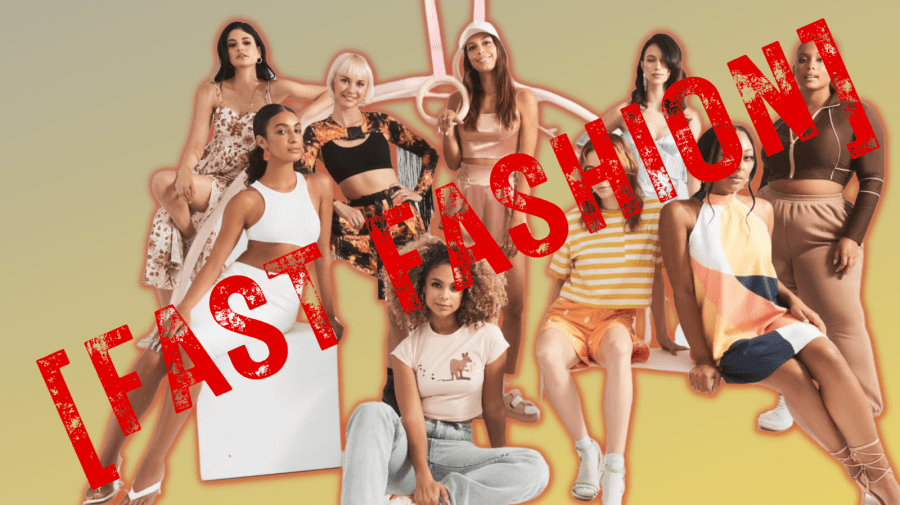
Whether you spend time on social media or shop for your attire online, you’ve likely come across a fast fashion brand. Often, these brand’s sites and ads feature enticing images of on-trend clothing and accessories, and boast incredibly affordable prices, making them seem like an excellent option for your latest wardrobe refresh.
The issue is, fast fashion companies — including Shein, an emerging leader with a massive online and social media presence — aren’t typically operating in a sustainable, eco-friendly, or ethical way. If you’d like to learn more about the pitfalls of the industry — and what you can do to help combat fast fashion — here’s what you need to know.
Fast Fashion: An Industry Built on Price Alone
Fast fashion, also dubbed throwaway fashion, is an industry based largely on price. Most manufacturers operating in this niche focus on creating trendy apparel at the lowest possible cost. Then, they position their products as an affordable way to update your wardrobe, ensuring that you can get that hot new look without breaking the bank.
While that seems like a positive on the surface, fast fashion comes with some caveats; some of the biggest are concerns regarding sustainability, ethicality and eco-friendliness.
Generally speaking, fast fashion isn’t concerned about longevity when it comes to your clothing. The industry capitalizes on trends, using cheap materials and garment construction to keep costs low. In the end, you aren’t supposed to hold onto the items for long. Instead, these products are essentially designed to last a season — and then you toss them.
Since the business model isn’t concerned about durability, it often burdens the environment. These fast fashion brands create huge amounts of waste and pollution in addition to using limited resources in an unsustainable manner. According to Earth.org, studies show that the fashion industry in general is responsible for 10% of our annual global carbon emissions — more than shipping and aviation combined — and the fast fashion model certainly isn’t helping.

There are also problems regarding ethics. Often, poor working conditions and unfair wages are cited as issues in these manufacturing facilities at large; Shein, in particular, has been found guilty of some alarming practices, including “75-hour workweeks, hazardous work environments and other alleged labor law violations,” with their manufacturing sites being dubbed “informal workshops”, replete with barred windows and a disturbing lack of emergency exits (via Fashion Magazine).
But the ethical issues associated with fast fashion extend even beyond labor rights. Some fast fashion companies, like Shein, blatantly steal designs from independent designers or other big-name clothing brands. For Shein in particular, this also extends to selling culturally appropriated goods — they sold “Muslim prayer mats as home decor with descriptions like ‘Fringe Trim Greek Fret Carpet’”, reports Refinery29 — and incredibly offensive, anti-Semetic necklaces.
Shein Clothing: The Rise of a Fast Fashion Leader
Founded in Nanjing, China, in 2008, Shein is a relatively new entrant into the fast fashion industry. However, the company’s approach allowed it to scoop up an enormous market share with shocking speed. In May of 2021, Shein became the most downloaded shopping app in the U.S., surpassing retail behemoth Amazon. Now, with an average of 7 million users per month, Shein boasts a staggering $100 billion valuation — more than Zara and H&M combined. So, how did the brand manage this impressive feat?
First, Shein is a direct-to-consumer shopping website. Unlike some other fast fashion brands, there aren’t any brick-and-mortar stores, eliminating potential overhead expenses, including the size of the company’s workforce. Second, Shein worked to make the most of social media and other forms of digital advertising. As a fast fashion retailer, its target market is typically teens and younger adults. Currently, that means targeting Gen Z, a digital-native generation.
By focusing on the digital space, Shein gained traction with its target market quite quickly. Along with the company’s slew of ads, social media users became an advertising powerhouse for the company, posting photos and videos of their affordable “clothing hauls” on YouTube and TikTok. In fact, these haul videos, accompanied with Shein-related hashtags, have become a viral trend that backs up the fact that 83% of people trust advice from friends and family — and influencers who they feel they know. Needless to say, people began flocking to the site as word (and videos) spread.
Now, this alone doesn’t make Shein seem like an issue. That’s particularly true since the company openly publishes a Supplier Code of Conduct that appears to address many of the environmental pitfalls associated with fast fashion.

However, any assertions are generally vague, and there isn’t any proof that the company’s manufacturing partners actually abide by these standards. Plus, local environmental protection laws aren’t very stringent in many parts of the world, giving manufacturers a way to shirk sustainability and accountability.
And there’s all those ethical questions, relating to fair wages and safe working conditions as well as the theft of designs and art from competitors and artists. One investigation even showed that Shein products contain potentially harmful materials, including lead, phthalates, and other chemicals. So, while the company’s growth may be impressive, a lot of the other stories swirling around it are not so admirable.
Shein Clothing Is a Problem, But It’s Not Alone
In many ways, Shein is a leading example of fast fashion due to its quick rise and trend-chasing tactics. However, Shein isn’t the only company operating with those guiding principles and priorities — and it certainly isn’t the only company pulling in large profits with the fast fashion model.
Retailers like Zara, ASOS, Forever 21, H&M, and Topshop all fall within this category. The brands create trendy looks for deeply discounted prices and rely on production approaches and materials that aren’t meant to stand the test of time. Essentially, the clothing they’re offering is viewed as disposable, even if throwing the products out and producing new lines of apparel is harmful to the environment.
How Can You Combat the Rise of Fast Fashion Like Shein Clothing?
As you might expect, the first step to combating the rise of fast fashion is to avoid purchasing from the brands mentioned above. Try discussing the pitfalls of this industry with family and friends, too; many people simply aren’t unaware of the ethical and environmental harms associated with fast fashion brands.
We also recommend shopping wisely by purchasing fewer clothing items and focusing on quality and sustainability. Choosing timeless pieces that are designed to last — and favoring eco-friendly, responsibly-sourced — materials makes a difference.

If you need trendy attire for a special event, renting instead of buying can make a difference. Similarly, donating gently-used clothing, instead of throwing it away, can help. If you’re a crafty person, try repairing items that are showing some wear. And, even if you aren’t an avid sower, reattaching buttons, putting in new zippers and adding patches isn’t as difficult as you might think.
Even if a piece isn’t repairable, that doesn’t mean the material can’t get a second life. Repurposing items by turning them into scarves, bags, or other goods still keeps the materials out of landfills.
How to Shop for Affordable Clothing Without Turning to Fast Fashion
Finding affordable attire without turning to fast fashion is doable if you use the right approach. Although you may view more expensive brands as a “splurge”, turning to high-quality brands that use ethical and environmentally-friendly practices is a wise choice in the long run. Maybe you can’t pull in a huge haul in one shopping trip, but you can add a few new pieces to your wardrobe every now and then. By shopping sales and clearance racks, and focusing on timeless attire along the way, you’ll buy clothing you can use for years — if not decades.
Shopping second-hand is another way to keep costs down without turning to fast fashion. Thrift stores, consignment shops, yard sales and second-hand online retailers (eBay, Depop and thredUP, for starters) can all help you access reputable brands without breaking the bank. Not only does this make your clothing shopping experience more affordable and sustainable, but this approach allows you to create your own style and develop looks that are uniquely yours.






